
On 31 August, Polish climbers Jacek Matuszek and Łukasz Dudek made the first repeat of the Spanish Route (8b+, 500 m) on the North Face of the Cima Grande di Lavaredo in the Dolomites, Italy. This is yet another top-end big wall ascent by the duo - who completed their ambitious 3-season long 'Alpine Wall Tour' last year on five of the hardest multipitch routes in the Alps: End of Silence (8b, Berchtesgaden Alps), Des Kaisers neue Kleider (8b+, Wilder Kaiser), Brento Centro (8b, Monte Brento, first repeat), Silbergeier (8b+, Rätikon) and Bellavista (8b+, Tre Cime di Lavaredo).
While Łukasz and Jacek were fighting their way up the famous Bellavista (8b+, 500 m) on Cima Ovest last year, on the neighbouring Cima Grande Much Mayr and Guido Unterwurzacher were making the first free ascent of one of the last unsolved projects of the Tre Cime group. The aid route - put up in 1977 by A. Gallego, M. Lozano, J. Carillo and M. Gomez - attracted climbers' attention again 26 years later when eminent Italian climber, Mauro "Bubu" Bole went for its first free ascent but failed, unable to work out the crucial pitch along the horizontal roof.
Much Mayr made it through the roof and graded the pitch 8b+, "maybe 8c", defining the general level of difficulty of the line and completing the first free ascent. Its dificult climbing, bad protection, long run-outs and loose rock as well as the fact that it is often hard to read make the route undoubtedly the most challenging test piece on Cima Grande.
The team inspected the route for the first time in July 2016. Lukasz commented:
'It was more than surprising to hear Jacek gasping, howling and mooing while climbing the initial 6b+ pitch. I felt embarrassed by my partner's attitude as it seemed inconsistent with his climbing for the last twelve months. A moment later I was out of breath myself and we realized that the grades in the topo were far from reality. Fortunately, it turned out that the hardest 8b+-c pitch was more of a sport climbing character offering massive moves in a severe overhang. The pitch is spectacular and although its protection consists of rotten bolts there are many of them. The pitches that follow are also very athletic and regardless of whether it is 6c or 7c you have to fight for every metre of it. The middle of the route is marked by the lip and from that point the way to the top looks easy, or at least this is what we figured from studying the topo.'
After a rest day preceded by three days of working out the beta and logistics, the team decided to make the final attempt but had to retreat from the section above the crucial pitch due to an imminent storm. In the middle of August, Łukasz came back to the Dolomites with his friend Jarosław Kluf to try the route again - taking advantage of a very short period of good weather. Łukasz climbed effectively, leading one pitch after another, including the hardest one and finally the team found themselves above the lip. Lukasz said:
'I expected easy climbing to the top and therefore didn't worry that much about muscle cramps. However, the run-outs started getting longer and longer and I had some serious difficulties finding the leading formations of the route in that sea of rock. We reached the penultimate 6a pitch after sunset. I was standing on the ledge trying to read the route in vain and grabbed a piece of rock above me to climb higher. It was completely loose and I started falling with it and after a massive pendulum I hit the wall with my coccyx. Somehow we managed to abseil to the foot of the wall but after our return to Poland I did not believe I would be able to recover fast enough to come back to Tre Cime to make another attempt. It was hard for me to walk normally and I could forget about climbing. However, with every day I felt much better and we decided with Jacek to go for it in the end of August.'
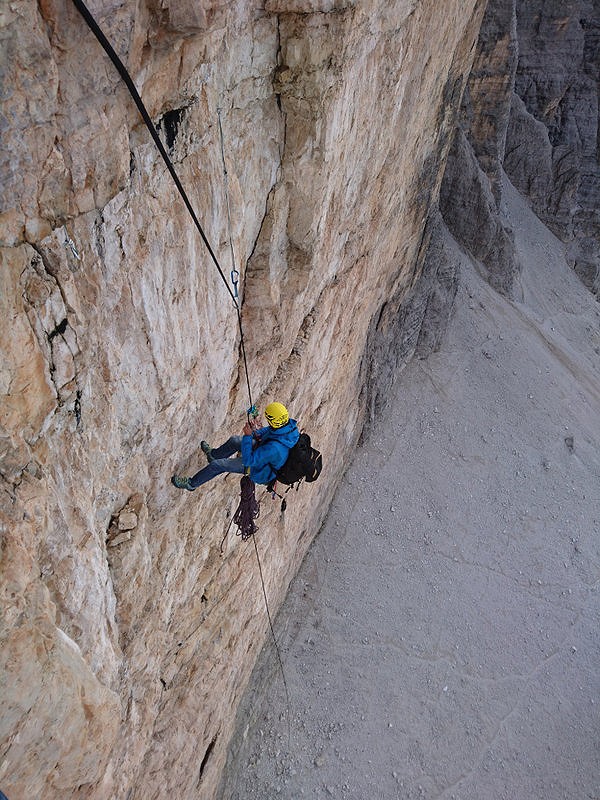
The plan included placing some new bolts in the stances that were in poor condition, as well as collecting all gear left by Łukasz and Jarek during their retreat two weeks earlier. On the following day they headed for the final attempt. The morning fog covered the holds with unpleasant humidity, although the hardest pitch stayed dry and Łukasz finished it with no problems. Jacek followed in his footsteps and made it through the roof on his 3rd go. Having a flashback of the accident still in his mind, Łukasz's caution was increasing as the team was moving higher on the wall, finally reaching the lip. They knew there was no chance of them finishing the route by daylight. Although they brought their sleeping bags with them, they wanted to keep on climbing with headlamps as far as possible.
'We were definitely afraid of the upper part of the route which consists of loose rock interwoven with solid sections but with bad protection along them. In terms of climbing difficulties, we could not really differentiate between 6a and 7a pitches. Moreover, once again the wall got wrapped up with dense fog and it got super cold. When it was my turn to lead and I had a 6b pitch in front of me I was scared. The pitch was a sort of mental challenge I had to overcome and simultaneously the hardest pitch for me on that day. I reached the belay stance screaming out loud with joy and relief. The next 6a pitch turned out to be half wet. Our pace slowed, we felt dead tired and there were still 80 metres of climbing above us. When it was my turn again and I got onto the penultimate 6a pitch I grabbed a rock and it crunched. When I passed by it, the rock detached itself and started falling directly at Jacek. Fortunately, he managed to jump to the side at the last moment. The final pitch was a one man show - the falling rock did not break Jacek's spirit and being unable to read the route in the darkness, he decided to climb an extremely long run-out up to the final ledges.'
The team reached the top of Cima Grande at 3.00am. During their ascent Jacek and Łukasz swapped leads every pitch and the hardest one was climbed by both of them. The ascent took 26 hours.
Follow their latest updates on Facebook.
Watch a film of their Alpine Wall Tour (with English subtitles) here.
Lukasz and Jacek are sponsored by: Salewa

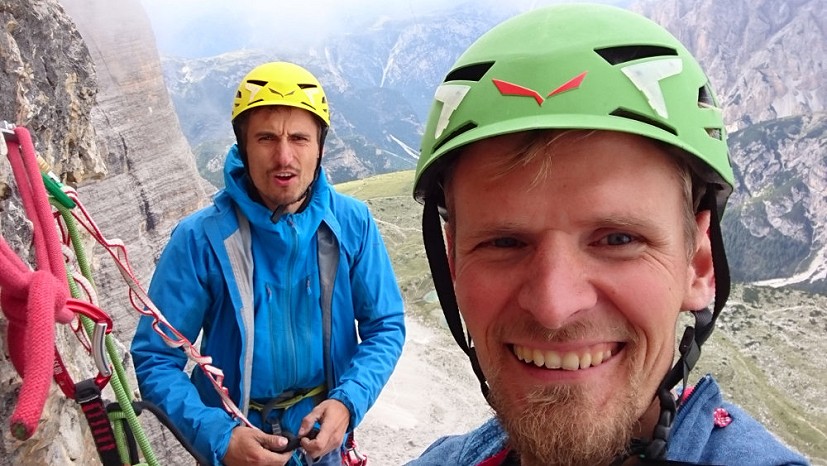
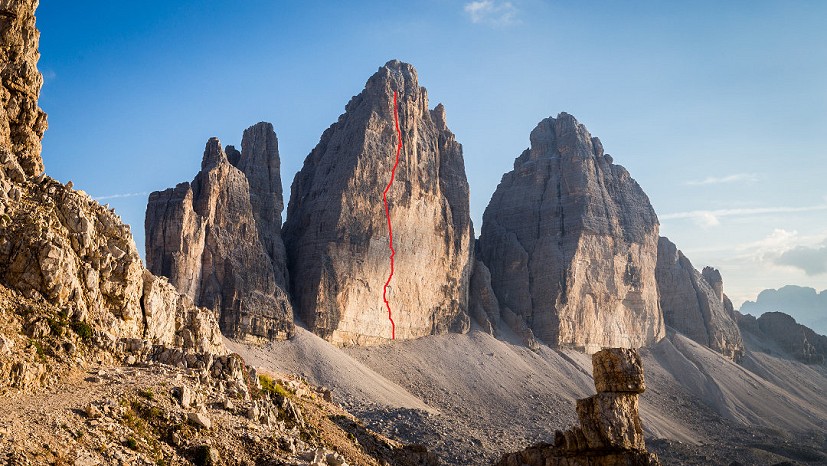
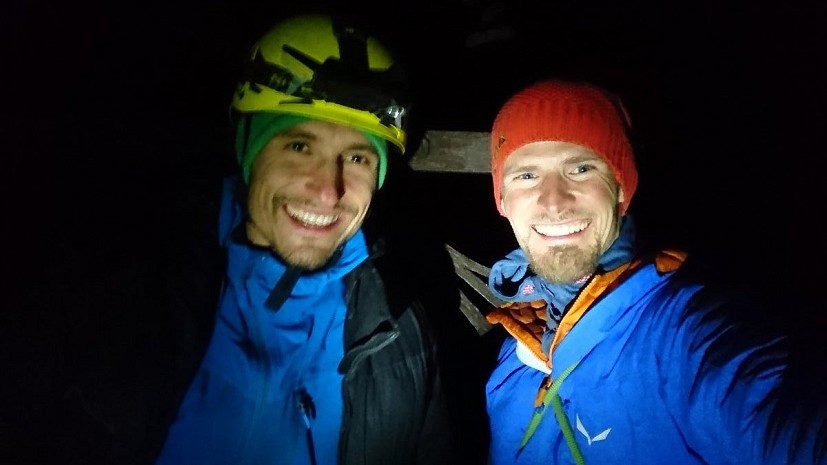


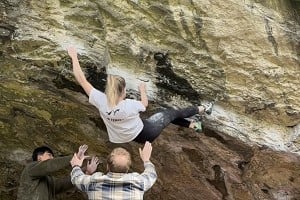
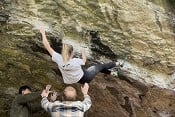

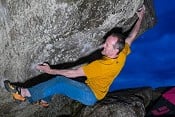
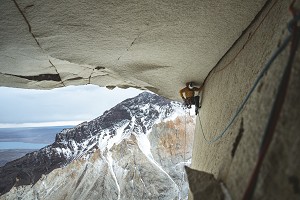
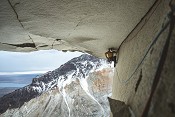
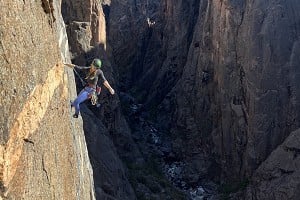
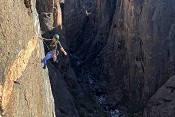

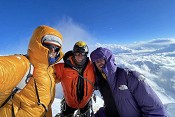
Comments